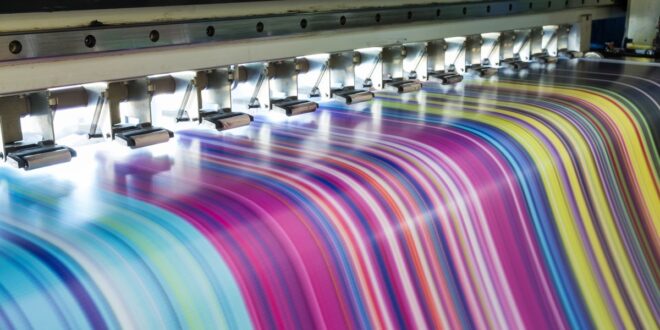Digital printing has had a profound impact on the printing industry, transforming the way that businesses, organizations, and individuals approach printing. In this article, we’ll take a closer look at some of the ways that digital printing has changed the printing industry, including its impact on cost, turnaround times, and the overall printing process.
Cost
One of the most significant impacts of digital printing on the printing industry is its effect on cost. Traditional printing methods, such as offset printing, often require expensive setup costs, making them less cost-effective for smaller print runs. Digital printing, on the other hand, allows for more affordable and cost-effective printing, as it eliminates the need for costly setup and plates.
Digital printing also allows for greater flexibility in terms of print volume, allowing businesses and organizations to print only what they need, rather than ordering large quantities of printed materials that may go unused. This has led to a shift away from the “print and store” approach of traditional printing, and towards a more on-demand and just-in-time printing approach.
Turnaround Times
Another significant impact of digital printing on the printing industry is its effect on turnaround times. Traditional printing methods can often require lengthy lead times, as they involve multiple steps and processes. Digital printing, on the other hand, allows for much faster turnaround times, as it can produce prints almost immediately after receiving the digital file.
This has led to a shift towards more just-in-time printing, where materials are printed as needed, rather than being printed in advance and stored for later use. This can help businesses and organizations to save time and money, as they can avoid the costs associated with storing and managing printed materials.
Personalization and Customization
Digital printing has also allowed for greater personalization and customization in the printing industry. With digital printing, it’s possible to create unique and customized prints, tailored to the specific needs and preferences of each individual client or customer.
This has led to a rise in demand for personalized and customized printing, particularly in the areas of marketing and advertising. Businesses and organizations can now create customized promotional materials, such as brochures, flyers, and business cards, that feature personalized information, such as names, addresses, and other contact details.
Environmental Impact
Finally, digital printing has had a positive impact on the environment, as it allows for more sustainable and eco-friendly printing practices. Traditional printing methods often involve the use of chemicals, such as solvents and inks, that can be harmful to the environment. Digital printing, on the other hand, typically uses water-based inks and produces less waste, making it a more environmentally friendly option.
In addition, digital printing allows for more efficient use of materials, as it can print only what is needed, rather than producing large quantities of printed materials that may go unused. This can help to reduce waste and minimize the environmental impact of the printing industry.
Conclusion
Overall, digital printing has had a significant impact on the printing industry, transforming the way that businesses, organizations, and individuals approach printing. From lower costs and faster turnaround times, to greater customization and a more sustainable printing process, the benefits of digital printing are clear. As technology continues to evolve, it’s likely that digital printing will continue to play a central role in the printing industry, driving innovation and providing new opportunities for businesses and individuals alike.
 HammBurg Be informed with latest news, reviews, entertainment, lifestyle tips, and much more.
HammBurg Be informed with latest news, reviews, entertainment, lifestyle tips, and much more.




